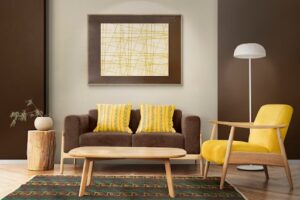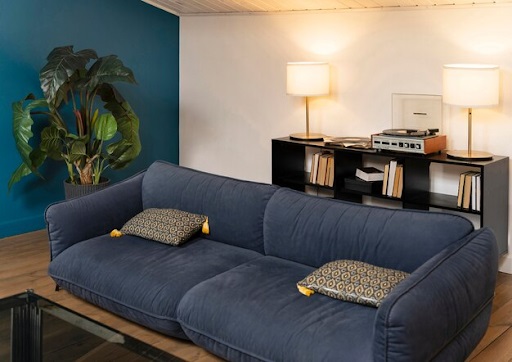Creating stylish, functional spaces within our homes is an art form that intertwines creativity, functionality, and personal expression.
At the heart of this art lies furniture—the cornerstone of interior design that shapes the ambiance, functionality, and overall appeal of our living spaces.
In this blog, we’ll explore the nuances of furniture’s role in elevating interiors, transforming them into stylish, functional havens.
The Essence of Interior Elevation
The concept of elevating interiors goes beyond mere aesthetics. It encapsulates the harmonious blend of style and functionality, crafting spaces that resonate with our personalities while catering to our practical needs. Furniture stands as the foundational element that ties together these essential aspects.
Crafting Aesthetic Brilliance
Firstly, furniture plays a pivotal role in shaping the aesthetic appeal of any space. Whether it’s the sleek lines of modern furniture or the intricate details of traditional pieces, the style of furniture sets the tone for the entire room.
The choice of furniture, especially from distinguished brands like Worlds Away, determines the ambiance—be it cozy, elegant, minimalistic, or eclectic. A beautifully curated space owes much of its charm to the selection, arrangement, and interplay of different furniture elements. Worlds Away Furniture, known for its contemporary designs that merge sophistication with functionality, exemplifies how specific furniture choices can contribute to defining the mood and character of a room.
Functionality as the Core
Yet, the beauty of furniture lies not just in its visual appeal but also in its functionality. The art of interior elevation involves selecting furniture that serves a purpose beyond mere decoration. Design considerations like ergonomics, versatility, and utility are crucial.
Pieces that optimize space, offer storage solutions, or adapt to different needs showcase the fusion of style and practicality, enhancing the functionality of the room.
Balancing Act: Harmony and Cohesion
A key aspect of elevating interiors through furniture is achieving harmony and cohesion. It’s not just about having beautiful individual pieces; it’s about how they interact within a space.
The interplay of colors, textures, shapes, and sizes of furniture pieces creates a visual symphony that ties the room together. This balance fosters a sense of unity and coherence, transforming disparate elements into a cohesive design.
Furniture as Statements
Within the realm of interior design, furniture often takes center stage as a statement piece. Whether it’s a unique vintage find, a modern designer piece, or a custom-made creation, these standout items can define the character of a room.
By strategically placing such furniture, designers and homeowners alike can draw attention to specific areas, elevating the overall design aesthetic.
Trends, Innovation, and Sustainability
The world of furniture design is continuously evolving, influenced by trends, innovation, and sustainability. Contemporary trends shape the forms, materials, and styles of furniture, reflecting the tastes and preferences of the times.
Innovative designs that merge style with functionality are revolutionizing the way we perceive and use furniture.
Moreover, the growing emphasis on sustainability drives the creation of eco-friendly furniture, aligning with our ethical values and environmental consciousness.
Real-Life Showcases: Bringing Theory to Life
Exploring real-life examples and case studies can provide valuable insights into the practical application of these principles.
Examining successful interior design projects showcases how furniture selection, placement, and design choices contribute to the overall elevation of interiors.
Interviews with designers or homeowners shed light on the thought processes behind their furniture selections and how these choices transformed their spaces.
Customization and Personalization
One of the most empowering aspects of furniture in interior design is the opportunity for customization and personalization. Bespoke furniture pieces allow homeowners and designers to tailor items to specific needs, preferences, and spatial constraints.
Whether it’s adjusting dimensions, choosing fabrics, or incorporating unique features, customization adds a personal touch to spaces, creating a sense of ownership and individuality.
Versatility and Multifunctionality
The modern approach to furniture design often revolves around versatility and multifunctionality. With space becoming a premium, furniture that serves multiple purposes becomes invaluable. Sofa beds, convertible tables, and storage-integrated seating are examples of how furniture adapts to varying needs, making smaller spaces more practical without sacrificing style.
Psychological Impact: Emotions and Well-being
Beyond the visual and functional aspects, furniture influences our emotions and well-being. Thoughtfully curated furniture can evoke feelings of comfort, tranquility, and joy.
Comfortable seating arrangements, cozy nooks, and well-designed ergonomic workstations contribute to our emotional well-being, creating spaces where we feel relaxed, inspired, and productive.
The Evolution of Trends and Sustainability
Trends in furniture design are in a constant state of evolution, reflecting societal shifts and technological advancements. From the revival of retro styles to the embrace of minimalist designs, trends influence the aesthetics and functionalities of furniture.
Moreover, sustainability has emerged as a pivotal consideration, leading to the rise of eco-friendly materials, recyclable furniture, and ethical manufacturing practices.
The Role of Technology and Innovation
Advancements in technology have revolutionized furniture design, introducing innovations that redefine our interaction with living spaces.
Smart furniture incorporating IoT (Internet of Things) features, such as adjustable lighting, temperature control, or integrated charging ports, seamlessly blend technology with functionality, enhancing convenience and comfort.
Empowerment Through Education and Inspiration
Understanding the art of furniture in creating stylish, functional spaces empowers individuals to make informed choices.
Educational resources, design blogs, and social media platforms provide inspiration and insights into the latest trends, enabling homeowners to transform their spaces effectively.
The art of furniture in creating elevated interiors is a dynamic journey—a journey that we embark upon as we shape our personal spaces into reflections of our unique selves.

Conclusion
In conclusion, furniture serves as more than just functional pieces within our homes. It embodies the artistry of interior elevation, influencing the mood, functionality, and overall appeal of our living spaces. By understanding the symbiotic relationship between style and functionality, and by embracing trends, innovation, and sustainability, we unlock the potential of furniture in crafting stylish, functional havens that reflect our individuality and enhance our daily lives.



